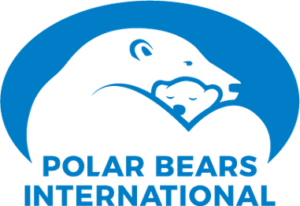You can help our conservation efforts by making a tax-deductible donation to Utah’s Hogle Zoo.
Utah's Hogle Zoo
Conserving Polar Bears

Why they Need our Help
Climate Change is decreasing the amount of sea ice available for polar bears to hunt, mate, and raise their cubs on. In addition, human growth and development in Arctic areas has led to bear– human conflict. It is estimated that there are around 25,000 polar bears left in the wild today. Polar bears were listed as a Threatened Species under the Endangered Species Act in May 2008.
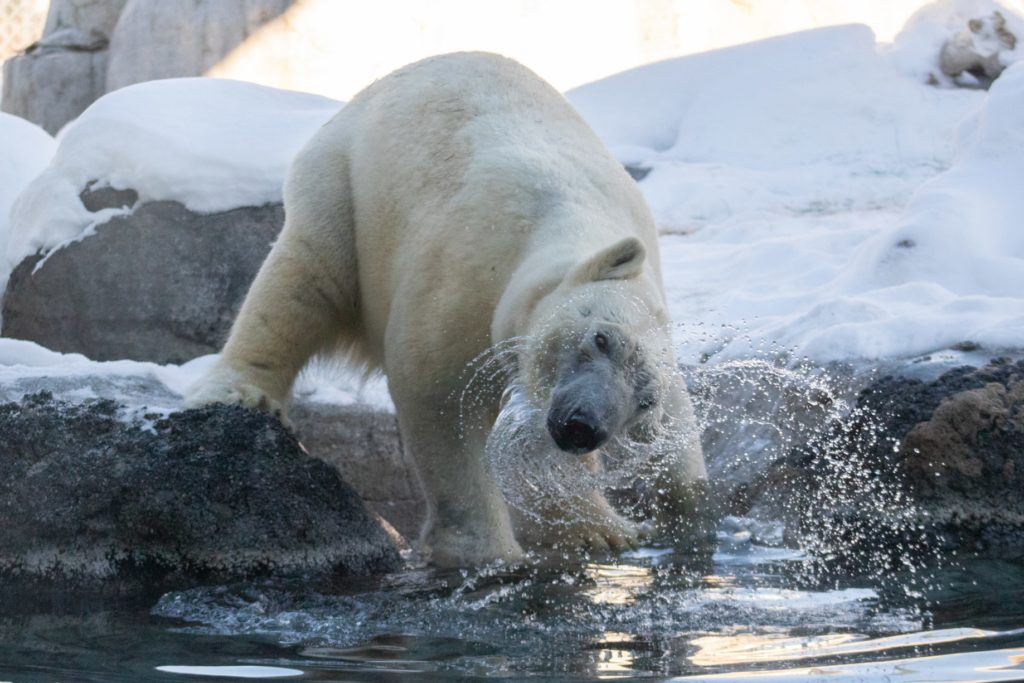

OUR WORK
Utah’s Hogle Zoo is a proud partner of Polar Bears International (PBI), the world’s leading polar bear conservation group. Learn more about this organization and how they help polar bears in the wild.
At the Zoo
Arctic Ambassadors
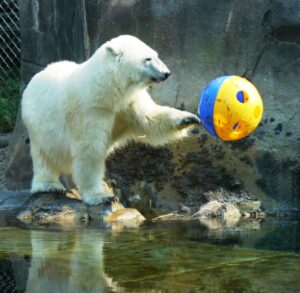
As an Arctic Ambassador Centre (AAC), Utah’s Hogle Zoo is committed to increased action, on both an institutional and community level, to reducing the emission of greenhouse gases. This goal is achieved through public education on climate change and acting as a leader in the community in reducing carbon emissions.
The zoo is home to two resident polar bears that are ambassadors for their species and a tangible way to teach the public about climate change. Visit them at the Rocky Shores exhibit!
Climate Alliance
Utah’s Hogle Zoo has been a proud member of Climate Alliance since 2008. Climate Alliance is run by Polar Bears International (PBI) and the National Network for Ocean and Climate Change Interpretation (NNOCCI). Climate Alliance is all about sharing climate change information to inspire change and promote conservation behaviors that can make a real difference.
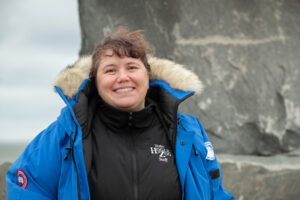
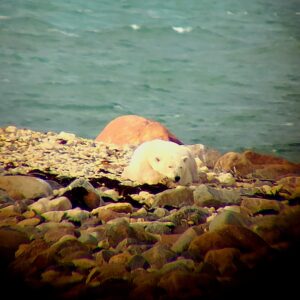
Reducing human-wildlife conflict
Churchill, Manitoba in Canada is known as the “polar bear capital of the world.” Nestled on the western coast of the Hudson Bay, at the mouth of the mighty Churchill River, Churchill has a population of fewer than 1000 year-round human residents.
It is a winter home to polar bears who come for the sea ice and seal hunting as the Hudson River pours into the bay. It is also the first area to freeze over. This early-year creation of sea ice is very attractive to polar bears and they arrive.
These areas of seasonal ice are where the polar bears are most endangered. With longer stretches of time between ice melt and ice formation, polar bears are being pushed to the limits of their fat reserves. The Canadian Wildlife Service has estimated more than a 20% decline in numbers of polar bear in the Hudson Bay area over the last 30 years. Polar bears start to arrive at Chruchill every October after a long summer of fasting and begin to gravitate towards natural food sources. If the sea ice has not formed by the time they arrive, there is a chance they will head into the town of Churchill to seek out alternative food sources.
Wildlife conservationists try to reduce human-wildlife conflict through early detection of wildlife approaching human settlements. Utah’s Hogle Zoo and our partners work with Churchill’s Polar Bear Task Force using an early detection system that residents of Churchill can rely on to inform them of approaching polar bears and wildlife. The Polar Bear Task Force is successful in its work, but require lots of staff time and resources.
We are testing Utah manufactured military detection radars on their ability in spotting polar bears long before they reach the edge of Churchill. The radars are mounted onto buildings and provide long-distance warning signals of approaching wildlife 24 hours a day. The system was tested on bears at Alaska Zoo to get a better idea of how polar bears would appear on the radar screen. Paired with cameras, the system can then track polar bears in real time, providing valuable information in decision making.
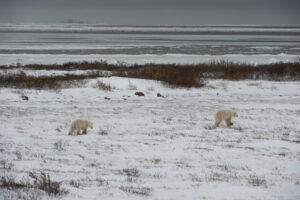

These radars will give wildlife managers more time to discourage bears from entering the area to avoid bear-human conflict. In Oct 2019 the radar was installed on the rooftop of the town’s community center aimed at popular bear corridors through the town. Eventually, such systems can be used for the detection of a wide array of wildlife, decreasing human-wildlife conflict.
MATERNAL DEN STUDY
Utah’s Hogle Zoo recently concluded a ten-year joint study with Polar Bear International (PBI) and Brigham Young University (BYU) aimed to uncover information on polar bear females and their cubs in the early months after giving birth on the north slope of Alaska.
